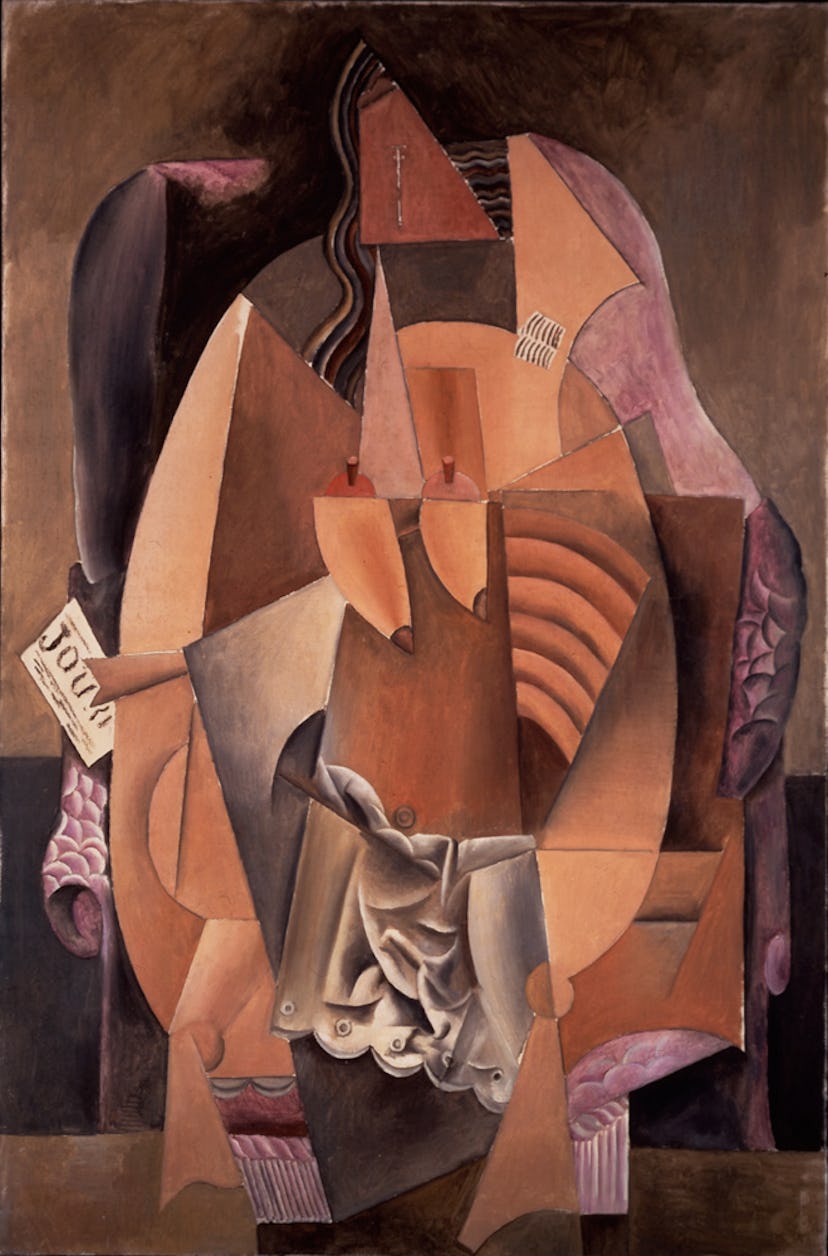Cubism signified the shift in art from the representation of reality to the expression of the artist’s eye. I’m in the beauty business, and I’m more interested in the artist’s eye. Cubist images are complicated because they capture how we see and describe the many ways in which we behold beauty. And beholding beauty is what it’s all about.
1
Pablo Picasso’s Femme Assise Dans un Fauteuil (Eva) (Woman in an Armchair [Eva]), 1913–1914. © 2014 Estate of Pablo Picasso/Artists Rights Society (ARS), New York.
2
Fernand Léger’s Homme Dans un Paysage Mécanique (Man in a Mechanical Landscape), 1918. © 2014 Artists Rights Society (ARS), New York/ADAGP, Paris.
3
Juan Gris’s Portrait de la Mère de l’Artiste (Portrait of the Artist’s Mother), 1912. Courtesy of Leonard A. Lauder Cubist Collection.
4
Gris’s Poires et Raisins sur une Table (Pears and Grapes on a Table), 1913. Courtesy of Leonard A. Lauder Cubist Collection.
5
Léger’s Composition (Le Typographe) (Composition [The Typographer]), 1917–18. © 2014 Artists Rights Society (ARS), New York/ADAGP, Paris/ Stinehour Photography.
6
Georges Braque’s Arbres à l’Estaque (Trees at L’Estaque), 1908. © 2014 Artists Rights Society (ARS), New York/ADAGP, Paris.
7
Braque’s Le Violon (Mozart/Kubelick) (The Violin [Mozart/Kubelick]), 1912. © 2014 Artists Rights Society (ARS), New York/ADAGP, Paris.
8
Picasso’s Tête de Femme (Fernande) (Head of a Woman [Fernande Olivier]), 1909. © 2014 Estate of Pablo Picasso/Artists Rights Society (ARS), New York.
